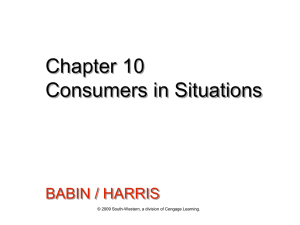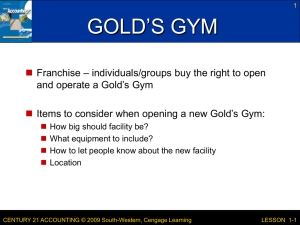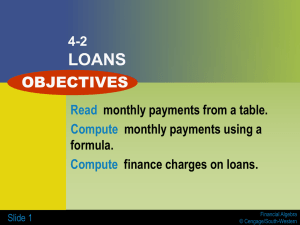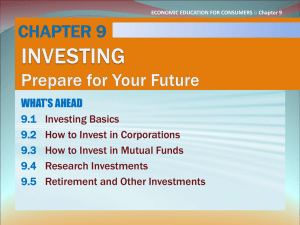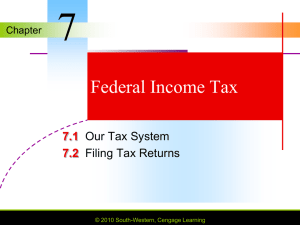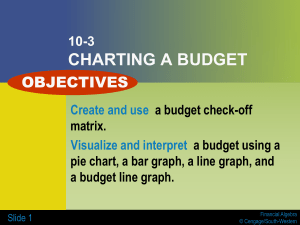chapter 9
advertisement
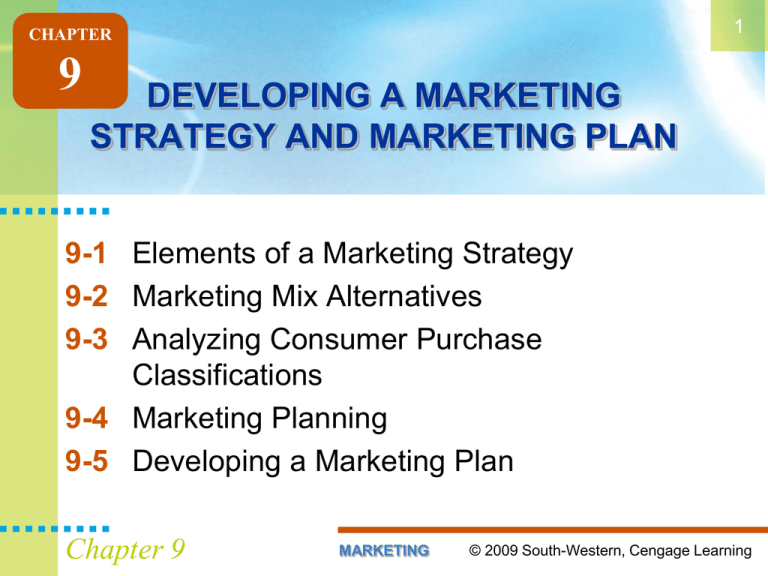
1 CHAPTER 9 DEVELOPING A MARKETING STRATEGY AND MARKETING PLAN 9-1 Elements of a Marketing Strategy 9-2 Marketing Mix Alternatives 9-3 Analyzing Consumer Purchase Classifications 9-4 Marketing Planning 9-5 Developing a Marketing Plan Chapter 9 MARKETING © 2009 South-Western, Cengage Learning 2 ©KRAFT Focus Questions: What memorable impression is Nabisco trying to leave with consumers who view this ad? How are the words and images in the ad used effectively? What consumer needs are the focus of the ad? Do you believe Nabisco has clearly demonstrated how the product appeals to those needs? Chapter 9 MARKETING © 2009 South-Western, Cengage Learning 3 9-1 ELEMENTS OF A MARKETING STRATEGY GOALS Describe how market segments are defined. Understand the four criteria that an effective target market must meet. Chapter 9 MARKETING © 2009 South-Western, Cengage Learning 4 Differentiating Market Segments Start with a market Recognize differences and similarities Segmenting factors Chapter 9 MARKETING © 2009 South-Western, Cengage Learning 5 Selecting Target Markets A target market is a clearly identified segment of the market to which the company wants to appeal. Chapter 9 MARKETING © 2009 South-Western, Cengage Learning 6 9-2 MARKETING MIX ALTERNATIVES GOALS Describe aspects of a basic product that can be altered to improve its market appeal. Discuss important influences on distribution, pricing, and promotions. Define four stages of a product life cycle. Chapter 9 MARKETING © 2009 South-Western, Cengage Learning 7 Fine-Tuning the Product Basic product Product features Options Associated services Chapter 9 Brand/image Guarantee/warranty Packaging Uses MARKETING © 2009 South-Western, Cengage Learning 8 Distribution, Price, and Promotion Distribution is the marketing mix element that facilitates the physical exchange of products and services between businesses and their customers Price as a marketing mix element is defined as the amount a buyer pays as well as the methods of increasing the value of the product to the customers. Promotion includes the methods and information communicated to customers to encourage purchases and increase their satisfaction. Chapter 9 MARKETING © 2009 South-Western, Cengage Learning 9 Analyzing the Product Life Cycle Three factors to consider when planning a marketing mix: Type of competition Purchase behavior of consumers Strengths and weaknesses of the business Chapter 9 MARKETING © 2009 South-Western, Cengage Learning 10 Stages of a Product Life Cycle Introduction Growth Maturity Decline Chapter 9 MARKETING © 2009 South-Western, Cengage Learning 11 9-3 ANALYZING CONSUMER PURCHASE CLASSIFICATIONS GOALS Describe the four consumer purchase classifications. Explain how purchase classifications affect marketing planning. Chapter 9 MARKETING © 2009 South-Western, Cengage Learning 12 How Consumers Shop The consumer purchase classification system is based on two factors: Importance of the purchase to the consumer Willingness of the consumer to shop and compare products before making the purchase Chapter 9 MARKETING © 2009 South-Western, Cengage Learning 13 Classifying Products for the Consumer Market Convenience Goods Staple goods Impulse goods Emergency goods Shopping Goods Attribute-based goods Price-based goods Specialty Goods Unsought Goods Chapter 9 MARKETING © 2009 South-Western, Cengage Learning 14 Using Purchase Classifications in Marketing Convenience goods Shopping goods Specialty goods Unsought goods Chapter 9 MARKETING © 2009 South-Western, Cengage Learning 15 9-4 MARKETING PLANNING GOALS Understand the benefits of marketing planning. Describe the steps of developing a marketing plan. Chapter 9 MARKETING © 2009 South-Western, Cengage Learning 16 The Benefits of Planning What is a marketing plan? From strategy to plan Chapter 9 MARKETING © 2009 South-Western, Cengage Learning 17 Preparing for Marketing Planning Planning to plan Plans require information Performance of the company Performance of competitors Changes outside the company Information about current and prospective customers Gathering needed information Chapter 9 MARKETING © 2009 South-Western, Cengage Learning 18 9-5 DEVELOPING A MARKETING PLAN GOALS Identify the five types of market analysis used in developing a marketing plan. Explain how a marketing strategy is incorporated within a marketing plan. Explain the need for activity schedules and evaluation procedures in a marketing plan. Chapter 9 MARKETING © 2009 South-Western, Cengage Learning 19 Analyzing the Market Company mission Current markets and strategies Primary competitors External environment Internal analysis Chapter 9 MARKETING © 2009 South-Western, Cengage Learning 20 Developing the Marketing Strategy Determining goals and outcomes Defining a target market Specifying the marketing mix Developing a positioning statement Chapter 9 MARKETING © 2009 South-Western, Cengage Learning 21 Planning for Action Activity schedule Evaluation procedures Chapter 9 MARKETING © 2009 South-Western, Cengage Learning


